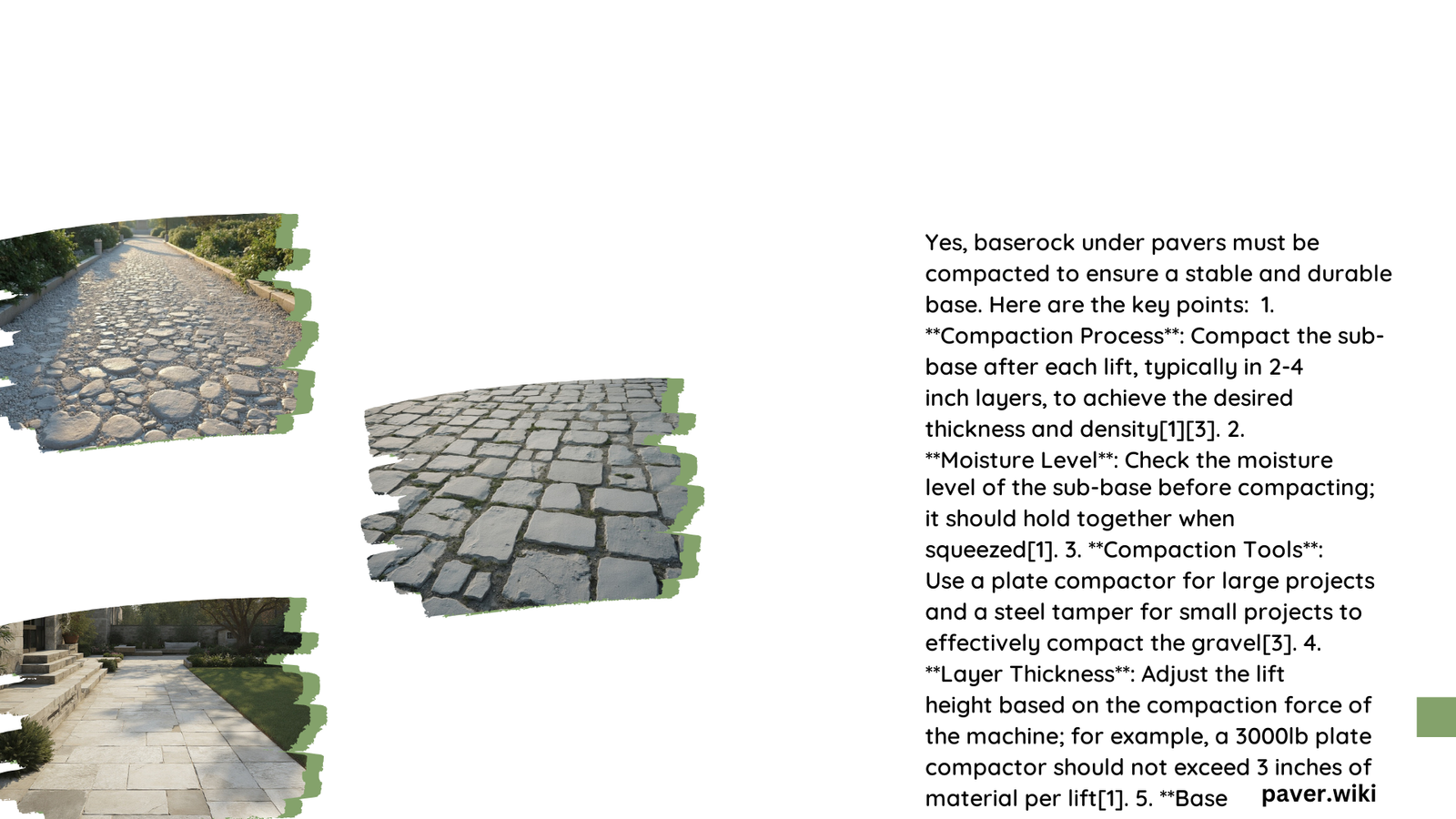Baserock compaction under pavers is crucial for the stability, longevity, and performance of paver installations. Proper compaction ensures even load distribution, prevents settling, and enhances durability. This guide explores the importance of baserock compaction, ideal techniques, and best practices for achieving optimal results in paver projects.
Why Must Baserock Under Pavers Be Compacted?
Compacting baserock under pavers is essential for several reasons:
- Stability: Compacted baserock provides a solid foundation for pavers.
- Load distribution: It helps distribute weight evenly across the surface.
- Settling prevention: Proper compaction minimizes the risk of pavers sinking or shifting over time.
- Longevity: A well-compacted base extends the lifespan of the paver installation.
- Drainage: It improves water drainage, reducing the risk of pooling and erosion.
What Are the Compaction Requirements for Baserock Under Pavers?

The compaction requirements for baserock under pavers are stringent:
- Minimum compaction: 95% Proctor density
- Preferred compaction: 100% Proctor density
- Compaction method: In lifts of 3 inches at a time
- Moisture content: Material should be moist but not saturated
Table: Compaction Requirements for Different Applications
| Application | Minimum Base Thickness | Northern Climate Thickness |
|---|---|---|
| Pedestrian Areas | 4 inches | 6 inches |
| Residential Driveways | 6 inches | 9 inches |
How Does Proper Baserock Compaction Benefit Paver Installations?
Proper baserock compaction offers numerous benefits:
- Even load distribution
- Minimized settling and shifting
- Enhanced long-term durability
- Improved water drainage
- Reduced risk of cracking or damage to pavers
What Is the Ideal Baserock Thickness Under Pavers?
The ideal baserock thickness depends on the application and climate:
- Pedestrian areas: 4-6 inches
- Residential driveways: 6-9 inches
- Northern climates: Add 2-3 inches to account for freeze/thaw cycles
Thicker layers should be compacted in multiple lifts to ensure uniform density throughout the base.
Which Compaction Techniques Are Most Effective for Baserock?
Effective compaction techniques for baserock include:
- Plate compactors
- Suitable for most paver projects
- Minimum force: 3,000 lbs/sq ft for small projects
-
Larger projects: 5,000-7,000 lbs/sq ft
-
Roller compactors
- Ideal for larger areas
-
Necessary for cohesive soils like clay
-
Vibratory compaction
- Effective for granular soils
-
Commonly used with plate compactors and vibrating rollers
-
Static compaction
- May be used for cohesive soils
- Less efficient than vibratory compaction
What Is the Step-by-Step Process for Compacting Baserock Under Pavers?
Follow these steps to properly compact baserock under pavers:
- Excavation
- Remove enough ground to accommodate base material and pavers
-
Ensure subgrade is stable
-
Add sub-base material
- Place material in 3-inch lifts
-
Compact each lift before adding the next
-
Check moisture content
- Material should hold together when squeezed but not be saturated
-
Add water if too dry
-
Compact the base
- Use plate compactor or roller compactor
- Achieve required density (minimum 95% Proctor)
- Ensure uniform thickness with variations not exceeding 3/8 inch over 10-foot run
How Does Moisture Content Affect Baserock Compaction?
Moisture content plays a crucial role in baserock compaction:
- Ideal moisture: Material holds together when squeezed but doesn’t crumble
- Too dry: Add a light sprinkle of water to promote effective compaction
- Too wet: Allow material to dry before compacting
- Proper moisture: Enhances compaction efficiency and achieves optimal density
What Are Common Mistakes to Avoid When Compacting Baserock Under Pavers?
Avoid these common mistakes when compacting baserock:
- Insufficient compaction force
- Compacting layers that are too thick
- Ignoring moisture content
- Uneven compaction across the area
- Skipping compaction between lifts
- Using the wrong type of compactor for the soil
How Can You Ensure Proper Compaction of Baserock Under Pavers?
To ensure proper compaction:
- Use appropriate equipment for the project size and soil type
- Compact in thin lifts (3 inches or less)
- Maintain optimal moisture content
- Perform multiple passes with the compactor
- Check compaction levels regularly using a density test
- Pay attention to edges and corners
- Allow sufficient time for compaction between lifts
By following these guidelines and understanding the importance of baserock compaction, you can create a stable, long-lasting foundation for your paver installation. Proper compaction is essential for the success of any paver project, ensuring durability, stability, and aesthetic appeal for years to come.
